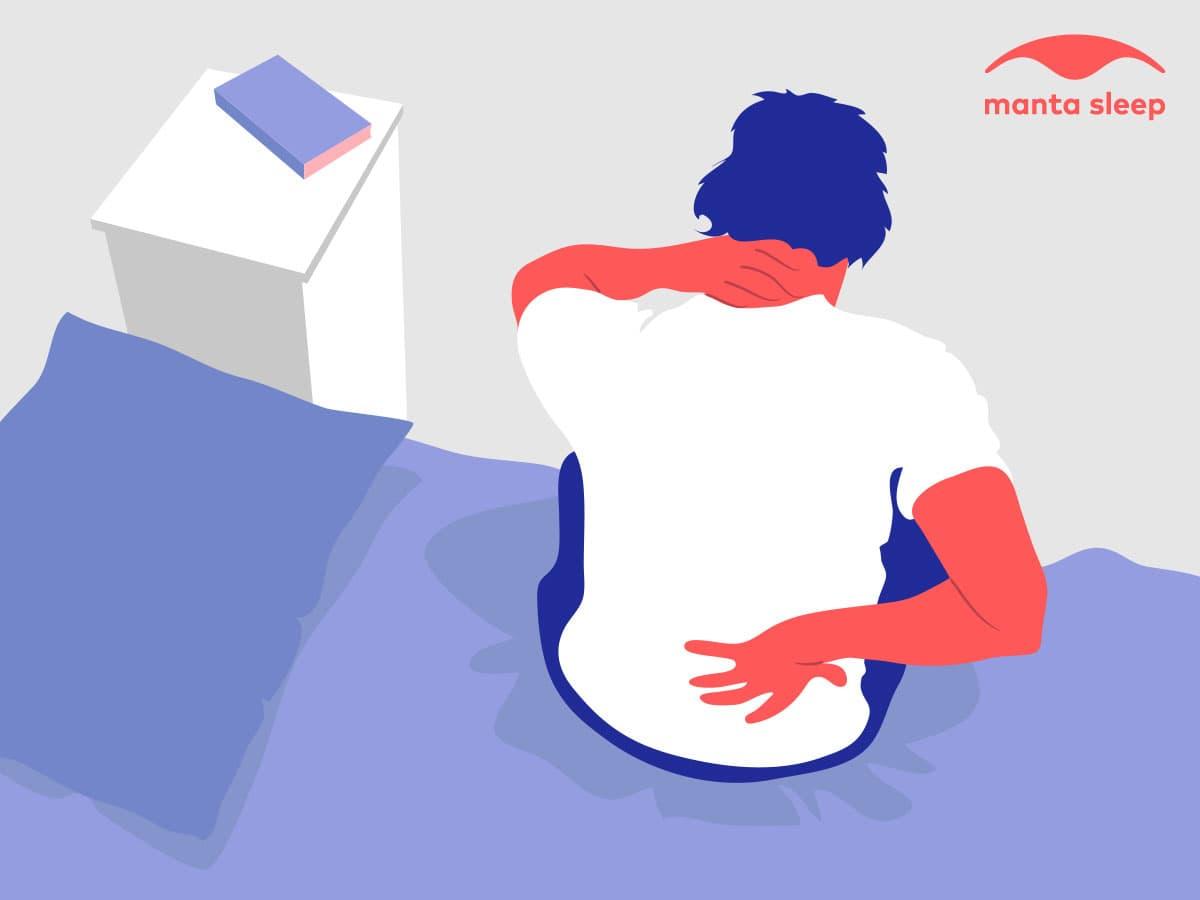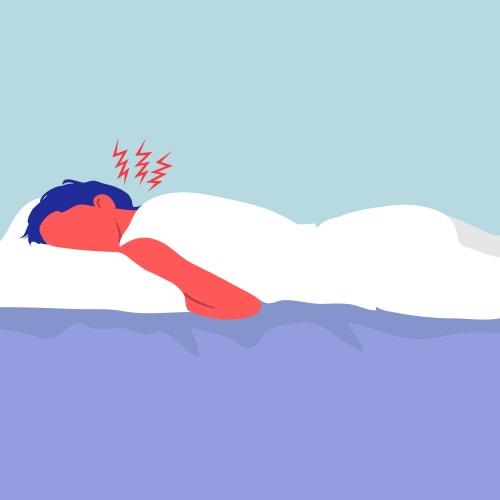How to Sleep in Your Favorite Position, Problem Free
Whether you’re a back sleeper, side sleeper or you can’t fall asleep unless you’re on your stomach…
You probably have a go-to sleep position that you rarely deviate from. And when you do try another position, it likely feels so unnatural that you switch back in your sleep.
But did you know sleeping in the same position every night can cause problems, like back pain or wrinkles?
Fortunately, you can make a few adjustments to any sleep position to prevent its negative side effects. And you can change positions occasionally to balance things out.
Read on to discover the pros and cons of your go-to sleep position, as well a few ways you can prevent its negative side effects — so you can decide whether to stick with your default position or switch it up.
The Benefits of Each Sleep Position — and Tips to Prevent Its Negative Side Effects
Side Sleeping
The Benefits:
-
Helps your cerebrospinal fluid remove toxins from your body (this is why you might experience fewer headaches after sleeping in this position)
-
Lowers risk of Alzheimer's
-
Sleeping on your left side can aid in digestion (this puts less pressure on your digestive system, which can also reduce heartburn and acid reflux)(1)
-
Reduces back and neck pain
-
Sleeping on your right side can help with circulation by putting less pressure on your heart (great if you have heart problems!)
-
Helps stop snoring and sleep apnea
-
For side sleeping, the left is the best position for an asthma patient
Overall, side sleeping positions are among the healthiest — but you could still experience some side effects from sleeping the same way every night.
The Side Effects:
-
Increased pressure on the liver
-
Can lead to wrinkles
-
Can cause joint pain
-
Restricts nerves, leading to arm and shoulder pain
Fortunately, there are things you can do to prevent these negative side effects. Read on to find out what they are.
Side Effect Prevention:
-
Try using a silk pillowcase to prevent premature skin aging
-
Sleep with a pillow between your knees (this will help reduce the joint pain that some people experience in this position)
Stomach Sleeping
The Benefits:
-
Can reduce snoring
-
Improves digestion and helps prevent heartburn
-
Lowers blood pressure
The Side Effects:
-
Reduces blood circulation to your face, so wrinkles can develop
-
Strains your neck and back
-
Adds stress to internal organs
But there’s good news: with a few minor adjustments, you can still catch zzzs comfortably using the prone sleep position.
Side Effect Prevention:
-
Place a pillow between your stomach and your mattress to keep your back straight (this helps reduce the neck and spine pain some stomach sleepers experience)
-
Sleep without a pillow under your head (or, if that’s too difficult, use a flat pillow instead — this change will reduce the strain on your neck and keep blood flowing to your face). Here's an additional tip: Use a sleep mask for stomach sleepers that won't feel bulky when your sleep with your head turned to the side.
Back Sleeping
The Benefits:
- Widely regarded as the best sleeping position because it’s natural and neutral (1)
- Relaxing for the neck, back, and spine
- Helps improve your posture
- Prevents heartburn and headaches
- Helps prevent wrinkles
Sleeping on your back is a very strong choice — but if you’re a back sleeper, there are a few less-than-ideal consequences you should be aware of too.
The Side Effects:
- May cause lower back pain
- Not recommended for pregnant women
- Can increase snoring
A few minor adjustments can help take this sleeping position from ‘good’ to ‘great.’
Side Effect Prevention:
- To help prevent back pain, try placing a pillow under the back of your knees and behind your neck
- If you snore or have a cold, prop your head up with a few pillows (your sleep partner will thank you — and you’ll sleep better, too)
Fetal Position Sleeping
Side Effect Prevention:
- Try to focus on keeping your back straight (by rounding your back, you’re placing unnecessary strain on your spine)
- Put a soft pillow under your head to support your neck, another pillow between your knees and yet another pillow between your elbows (you need a lot of pillows to make this position more comfortable)
Stick with It or Switch It Up?
Everyone has their favorite sleeping position. But unfortunately, each position comes with its own set of negative side effects.
So, should you stick with your go-to sleep position or switch it up?
It depends.
For many of us, changing to an entirely new sleep position is a tall order — and if you’re not experiencing any major problems, your best course of action is likely simply incorporating some of the side effect prevention tips above into your sleep routine.
But if your favorite position is causing you any kind of pain, it might be worth the effort to try switching it up. Note that this may be difficult at first, and you may have to cycle through a few different positions to find the one that’s most comfortable for you.
That said, if you really can’t make it work with another position, all is not lost. Instead of switching, you may find significant relief by implementing the side effect prevention tips above.
Either way, your body will thank you.
So now that you know how to sleep in your favorite position, wouldn't it be interesting to know what your sleeping position says about you?
Sources:
(1) “How to Sleep in Your Favorite Position Without Harming Your Health." Bright Side, www.brightside.me/inspiration-health/how-to-sleep-in-your-favorite-position-without-harming-your-health-506210/. Accessed 31 May 2019.
Are you a side sleeper and wake up with a painful shoulder? 😣
Maybe it's time to switch up your sleeping position.
#sleep #sleeptips #sleepfacts #napwithmanta
Disclaimer: The information contained in this website or provided through our blog, e-mails, or programs is for informational purposes only. It is not intended to be a substitute for medical advice, diagnosis or treatment that can be provided by your healthcare professionals.















































